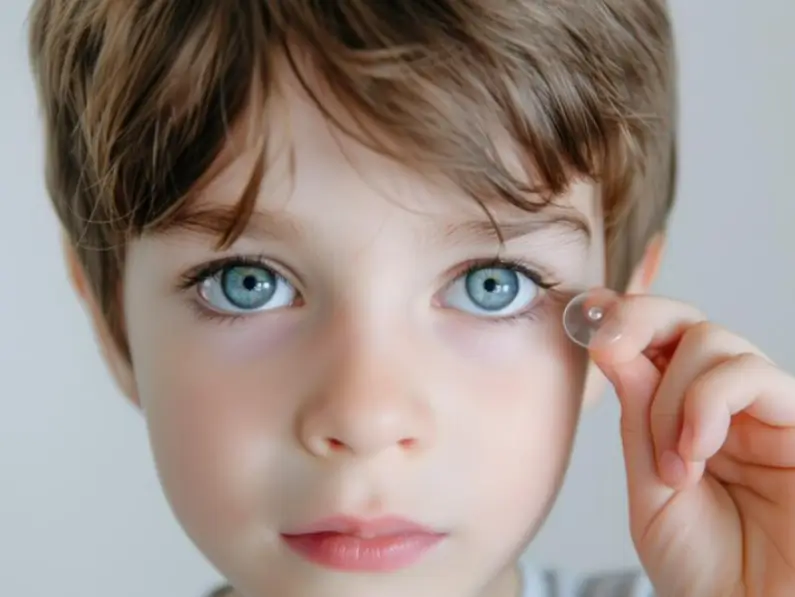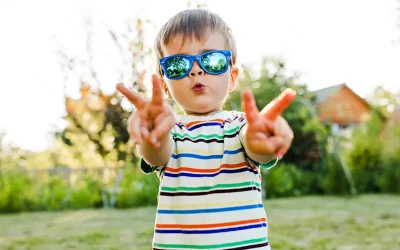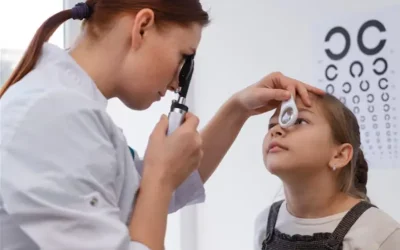Contact lenses can absolutely be a great choice for many children—provided they’re mature enough (often around age 8 and up) and follow proper hygiene routines. Not only do they correct vision as effectively as glasses, but they also boost confidence, simplify active play, and even help slow worsening nearsightedness through specialized lens designs. In this article, we’ll walk through age recommendations, lens types, safety protocols, and expert tips to help you decide if contacts are right for your child.
Understanding Contact Lenses for Children
Contact lenses are thin, curved discs that sit directly on the eye’s surface to correct refractive errors like nearsightedness, farsightedness, or astigmatism. Unlike glasses, they move with the eye, delivering an unobstructed panoramic view—no frames slipping or fogging under a helmet. For kids, this can translate into better performance in sports, less self‑consciousness in social situations, and, with newer lens designs, potential control over myopia progression.
Types of Contact Lenses Suitable for Kids
Pediatric patients almost always wear soft contact lenses because they’re flexible and comfortable. Two primary categories recommended by eye care professionals are daily disposables and multifocal lenses designed for myopia control.
Daily Disposable Soft Lenses
These lenses are worn once and thrown away each night. By eliminating the need for nightly cleaning solutions and cases, daily disposables drastically reduce infection risks and compliance errors—perfect for younger wearers who may forget or mishandle cleaning routines.
Multifocal Contact Lenses
Also known as peripheral defocus lenses, multifocal contacts have zones for distance and near vision. Clinical trials show they can slow childhood myopia progression by up to 50%, giving kids clearer vision today and healthier eyes tomorrow.
Ideal Age to Start Wearing Contact Lenses
There’s no one‑size‑fits‑all age, but many eye doctors begin considering kids as young as eight for contact lens wear—assuming they exhibit the maturity, responsibility, and manual dexterity required.
Maturity and Responsibility
Contacts demand daily rituals: inserting, removing, and (for non‑disposables) cleaning. Does your child wash and dry their hands thoroughly? Can they resist rubbing their eyes midday? Trial fittings with an optometrist can help gauge readiness and build confidence under supervision.
Pediatric Eye Care Guidelines
The American Optometric Association recommends annual pediatric eye exams and supports contact lens fittings for responsible young patients. These visits include hands‑on training, emergency action plans, and close monitoring to catch any early issues.
Benefits of Contact Lenses for Kids
Why consider contacts over glasses? Here are the top advantages:
Improved Self‑Esteem and Social Confidence
It’s no secret that some kids feel self‑conscious in glasses. Contacts eliminate that frame barrier, helping children feel more at ease in social, school, and sports settings.
Unobstructed Vision for Activities
Whether it’s scoring a goal on the soccer field or reading the whiteboard in class, contacts provide a full field of view. No slipping frames or peripheral distortions—just natural, clear vision.
Myopia Control with Specialized Lenses
With childhood nearsightedness on the rise globally, multifocal contacts offer a dual benefit: they correct vision now and actively slow the eye’s elongation, reducing the risk of high myopia later in life.
Potential Risks and How to Minimize Them
All contact lens wear carries some risk, especially infections, but proper education and follow‑up can greatly reduce these concerns.
Infection Risks and Hygiene Practices
Contaminated lenses or cases can introduce bacteria, fungi, or protozoa to the eye. Teaching your child to wash hands with soap and water before handling lenses, discard daily disposables, and never sleep in lenses unless prescribed are non‑negotiable rules.
Emergency Room Data and Safety Measures
Each year, thousands of pediatric ER visits involve contact lens complications, often due to overwear or water exposure. Regular eye‑care checkups, clear written instructions, and a plan for when redness or pain arises will help keep your child safe.
Training and Maintenance Tips
Success with contacts hinges on consistent habits and parental support.
Proper Insertion, Removal, and Storage
Optometrists should demonstrate each step and watch your child practice. A simple checklist or a reward chart can reinforce daily routines until they become second nature.
Encouraging Responsibility
Treating lens care as a milestone—complete with praise and small incentives—can motivate kids. Set reminders on phones or use apps dedicated to healthy eye‑care habits.
Cost Considerations and Insurance Coverage
Contacts tend to cost more than glasses, particularly daily disposables and specialty lenses. However, many vision insurance plans cover pediatric fittings and a portion of annual supplies. Compare providers, ask about trial discounts, and factor in long‑term benefits like myopia control.
Conclusion
So, are contact lenses a good choice for kids? For many children age eight and up—who demonstrate readiness and commitment—contacts offer clear vision, enhanced confidence, and even myopia‑control advantages. The key is careful screening by an eye care professional, hands‑on training, and a firm routine of hygiene and follow‑up care. When parents and practitioners work together, contacts can be a safe, effective, and empowering option for young wearers.
FAQ: Your questions answered
At what age can a child start wearing contacts?
Most experts begin fitting around age 8, depending on the child’s maturity and ability to follow care instructions.
Why are daily disposables often recommended for kids?
Daily disposables remove the need for cleaning solutions and cases, lowering the chance of infection and simplifying routines for younger wearers.
Do specialized lenses really slow nearsightedness in children?
Yes—multifocal and peripheral defocus lenses have been shown to reduce myopia progression by up to 50% in clinical studies.
How often should kids have eye exams if they wear contacts?
Annual comprehensive eye exams are recommended to monitor eye health, lens fit, and vision changes.
What if my child loses a contact or develops redness?
Keep spare lenses on hand and contact your eye doctor immediately if there’s any pain, redness, or vision change. Avoid home remedies or over‑the‑counter drops without professional guidance.




